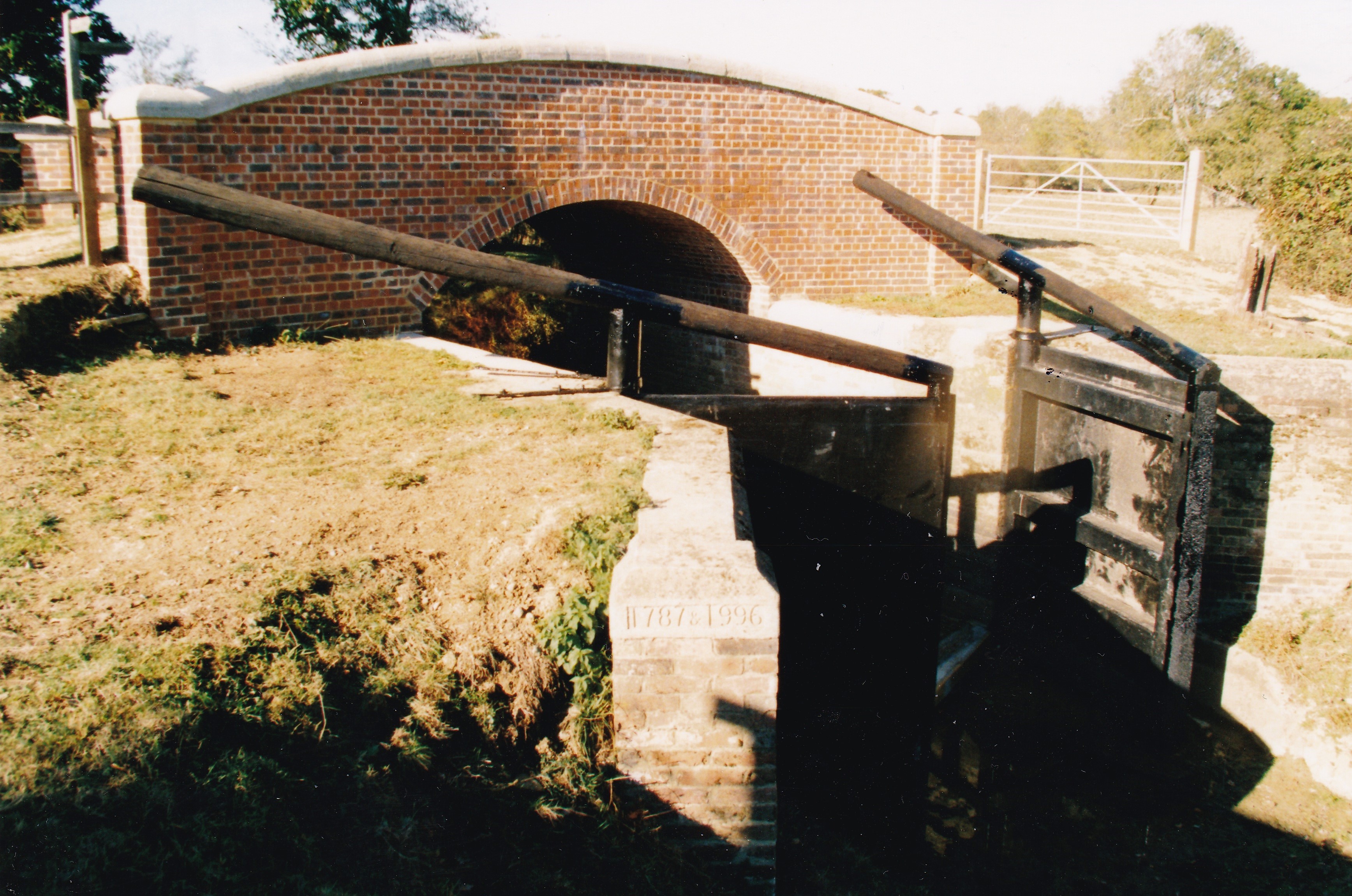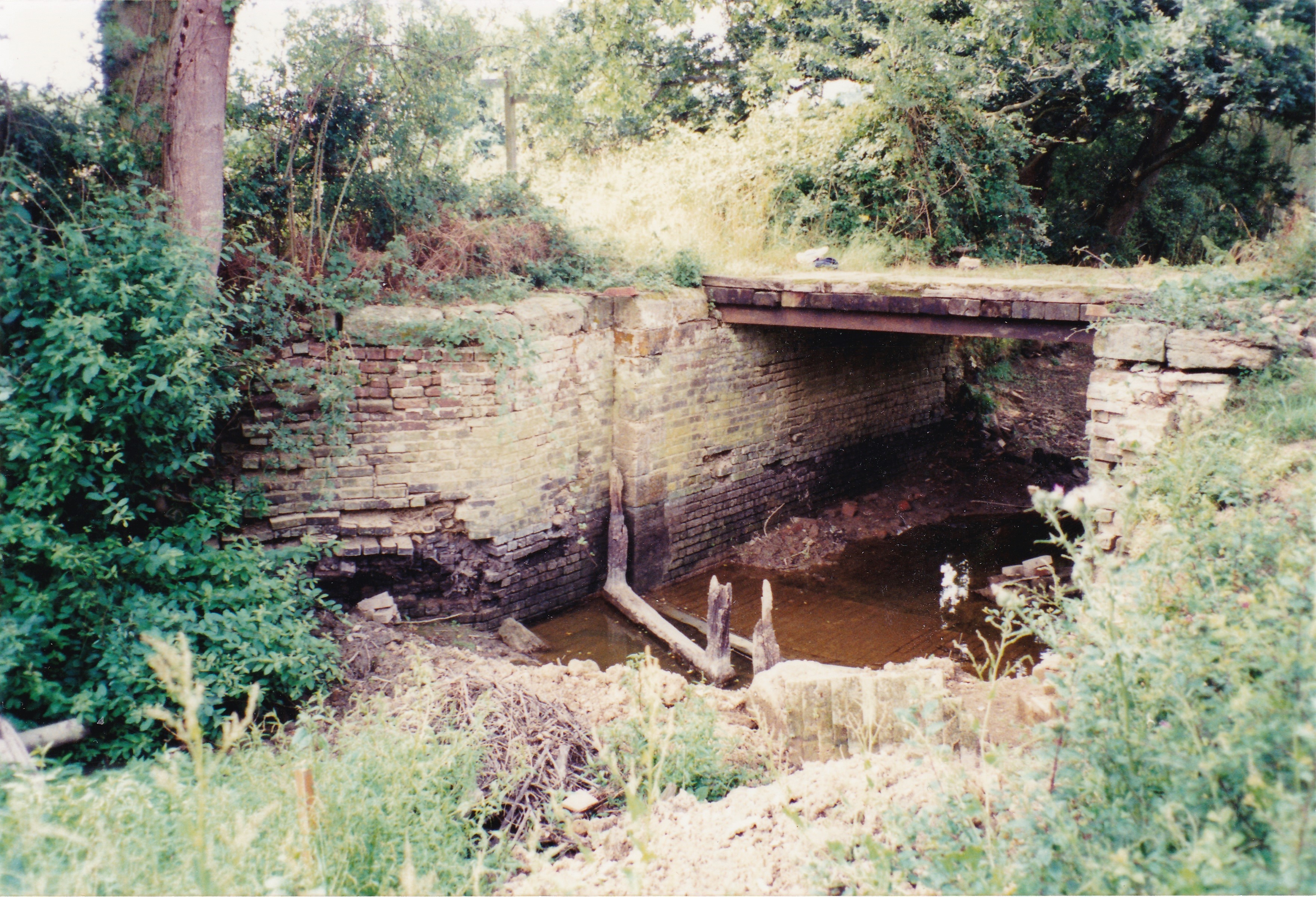
This is Lordings Flood lock and bridge, one of the more unusual structures on the Arun Navigation canal. The scourge of the old canal was always water levels: often too low in summer, sometimes grounding barges for weeks on end, with the opposite in winter when flooding regularly prevented safe navigation. Flood gates at this spot ensured that water didn’t immediately flow down to Harsfold Bridge leaving Lordings high and dry. A sufficient level of water was needed for barges to enter the main Lordings Lock, just up from here.
The other main problem for the canal was commercial: the expected levels of cargo were just not materialising. Tolls were constantly changed in the hope of stimulating additional traffic but as a route just up to Newbridge, traffic levels were never high.
History and changes to the Lock and Flood Gates
With the opening of the Wey and Arun Junction Canal in 1816 north from Newbridge up to the River Wey and with the opening of the Portsmouth and Arundel Canal down south in 1823, the Arun Navigation, passing through here at Lordings, became part of a through route of inland waterways from London to Portsmouth. However, being thirty years older, the Arun Navigation was soon identified as a weak link in this chain and it needed upgrading to carry heavier cargos and to try and stabilise water levels.
A series of improvements was therefore agreed, one of them being that a second pair of flood gates would be provided here at Lordings to create an enclosed lock. This implies that prior to this, the original Arun Navigation may have had just one set of flood gates on this site. The enclosed lock only gave a drop of one foot which doesn’t sound very much but that extra foot allowed the canal to accommodate slightly heavier cargos for slightly longer in the year. The previous limit of 30 ton cargos was now increased to 40 tons.
In normal conditions, both sets of the Flood Gates Lock would have been left open but the gates would have been closed when water levels were low in summer.
Restoration
Excavations made at Lordings Flood Gates early on in the restoration confirmed that two sets of gates were in existence (the picture below shows the remains of the lower gates in 1994). During these excavations, it was also discovered that the lock was a rare turf-sided lock and if practicable, this feature will be retained when the canal is returned to water. It will be interesting to see.

The bridge here took the towpath from one side of the canal to the other and it was rebuilt from scratch in 2002 to Josias Jessop’s original design. On it you will find a memorial plaque to restoration pioneer Winston Harwood, who, with his team, did a lot of rebuilding on this site and at the nearby Lordings Lock and Aqueduct site. This included restoration of Lordings Flood Gates Bridge, refurbishment of Lordings Aqueduct and Lordings Lock and rebuilding of the awesome waterwheel alongside the aqueduct. He was quite a guy and it will be further tribute to him when this stretch of the canal is eventually reopened.
Take a look at one of the strap hinges on the flood gates. Years ago when the canal first opened, it was made in a blacksmith's forge from a single strip of iron very cleverly shaped. It is still doing sterling work after over two hundred years of use and neglect and has survived in remarkably good condition having been left in place since the canal was abandoned in 1888.
Flora and Fauna
This part of the Arun valley is a wildlife haven with many different species of birds being apparent during the changing seasons. It is also a very beautiful area, giving many an opportunity for artists, photographers, and naturalists to capture images and species. During the seasons look especially for:
- In spring: Ground Ivy and Coltsfoot
- In summer: you may see Bittersweet and Black Bryony
- In autumn: Herb Robert.
Next Information Posts
Heading south, our next Information Post is half a mile away at the recently restored Lee Place (Harsfold Bridge). Volunteers from the Wey and Arun Trust regularly clear the towpath along here and keep the hedge under control – as they do along other stretches of the canal. If you would like to help maintain this lovely ‘green corridor’ or possibly get involved in some of our restoration projects, take a look at the volunteers page on the Wey and Arun Canal Trust web site at https://weyarun.org.uk/backdrop/volunteering
Heading north, the next Information Post is a couple of hundred yards away at Lordings Lock / Aqueduct. This is a real gem of engineering, especially the undershot waterwheel which has been lovingly restored back to working condition.
